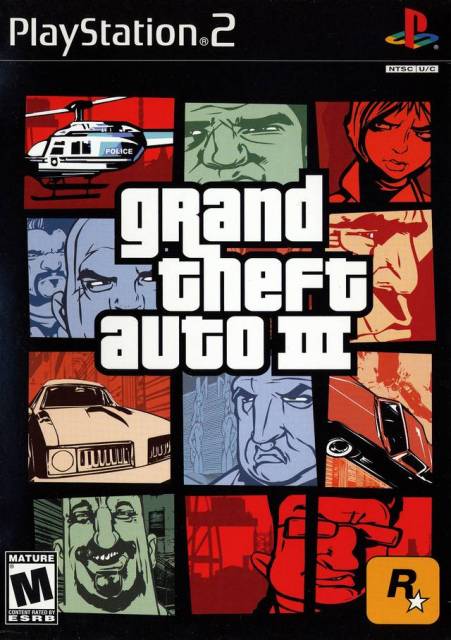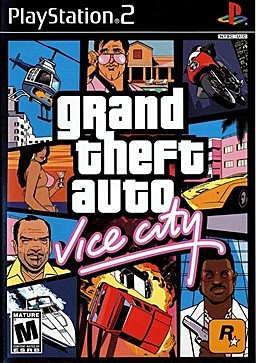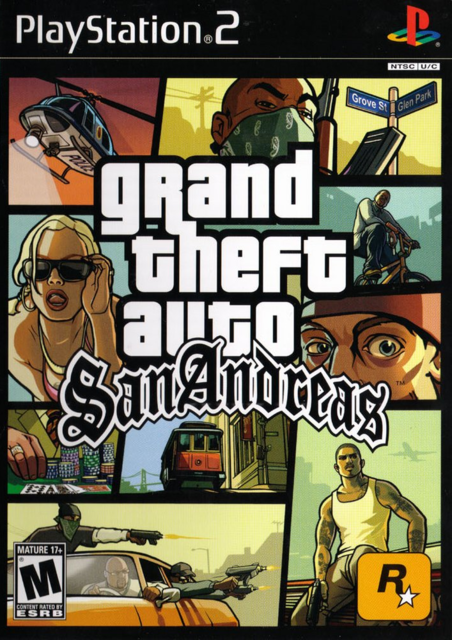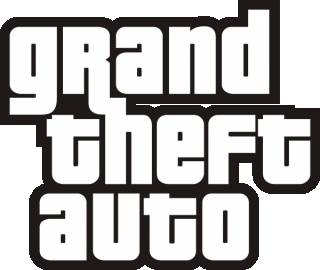Welcome to The Top Shelf, a weekly feature wherein I sort through my extensive PS2 collection for the diamonds in the rough. My goal here is to narrow down a library of 185 games to a svelte 44: the number of spaces on my bookshelf set aside for my PS2 collection. That means a whole lot of vetting and a whole lot of science that needs to be done - and here in the second round, that means narrowing our laser focus to one game per week (at least). Be sure to check out the Case File Repository for more details and a full list of games/links!
Extra Note: We're down to the wire now, just a few loose ends to tie up. Specifically, figuring out which of two (or three) very similar games from the same franchise is the superior entry. Our strict one-game-per-franchise policy means we'll need to bring in some science to determine the truly shelf-worthy here in The Top Shelf's third round: The Battle Royales!

Welcome all, to the Grandest of the Battle Royales this month. I've been dreading this episode, because it features three games that represent the pinnacle of one of the most important franchises in video gaming history: Grand Theft Auto III, Grand Theft Auto: Vice City and Grand Theft Auto: San Andreas. It would be a understatement to call these games influential; they've all but gone on to define the modern open-world game, at least of the type where you have a large city to explore by vehicle or on foot. Missions, side-missions, side-activities, mini-games, collectibles, incidental rabble-rousing: the GTA games starting from III set, and subsequently kept raising, a bar that many other developers have struggled to meet over the years since, filling their stylistic worlds with content to find and many sub-plots to pursue from various quest sponsors.

A quick run-down, though this should all be common knowledge already: Grand Theft Auto III introduces ex-con (well, technically "still-con") and silent protagonist Claude as he seeks vengeance on the ex-partner who left him for dead in the New York-inspired Liberty City; Grand Theft Auto: Vice City has mobster Tommy Vercetti working on behalf of east coast mafia bigwig Sonny Forelli after a drug bust goes bad, forcing him to collude, combat and ultimately conquer various underworld organizations in the titular take on 1980s Miami; and Grand Theft Auto: San Andreas briefly taps into the east-coast/west-coast rap disputes of the 1990s for its inspiration for a gang war across three major Californian cities and a personal murder mystery at the heart of it all for its protagonist Carl "CJ" Johnson. Vice City and San Andreas aren't so much sequels but additional "episodes" set across the world of Grand Theft Auto, with the first "true" sequel coming a generation later with Grand Theft Auto IV and its immigrant anti-hero Niko Bellic, but all the same each game carries with it various new ideas and implementations to GTA III's already solid first take on a 3D open-world action game.

Once again, I'm focusing on three categories that demonstrate the most variation between the three games: Story, which also includes sub-stories and other incidental narratives; Setting, which is really just going to focus on the cities and the time periods; and Gameplay Variation, which refers to the amount of side-content available and the diversity of the tasks the game provides you. (I also considered "Soundtrack" too, but we might be here all week. Suffice it to say, each of the three games has plenty of whatever it is you're looking for musically.)
I'm almost certainly not going to do these games justice, given how much there is to discuss, but hopefully I can build up a decent enough case for the eventual victor.
Story
Grand Theft Auto always has a lot going on in the micro as well as the macro when it comes to their narratives. Oftentimes, they're aiming for a particular movie reference to riff on or a chance to be silly, neither of which might be appropriate for the main storyline but work better as a shorter spin-off sub-story. The GTA games come up with a multitude of ways for the player to pursue slightly less conventional goals via optional mission sponsors which regularly start popping up alongside whomever is dispensing the next story-critical mission. It's kind of hard to summarize three whole games' worth of this approach, so I'm just going to focus on the main plot for each game and a side-mission that best exemplifies the game in which it features.
Grand Theft Auto III's core progression involves Claude chasing down Catalina, the Woman What Did Him Wrong, which leads to him working for various hoods across Liberty City. In this, the game can slowly introduce new districts as the plot progresses and Claude has to make a clean getaway when the heat gets too high, and this is a format that the future games also incorporate into their progressions. Claude is eventually working with both the Mafia and Yakuza (as well as a number of individuals like a crooked cop and a media mogul) against a third criminal organization, the Cartel, which Catalina is involved with. GTA III doesn't have quite as many non-essential quests as the others in the series, but a memorable chain involves Marty Chonks of the Bitch'n Dog Food Factory paying Claude to round up various agitators in his life, including a bank manager and his own wife, and bringing them to the factory to be killed and ground up into dog food. Just part of the delightful tapestry that is life on the streets of Liberty City.
Grand Theft Auto Vice City starts with a botched drug deal and spirals from there, as the mostly independent caporegime Tommy Vercetti has to placate his boss Sonny Forelli as he attempts to locate and recover the missing money from a disastrous drug bust. From there, though, the game has Tommy making various connections to figures across Vice City, largely those dealing in the drug trade, as well as taking on another jilted party in the botched trade - Lance Vance - as his right-hand man in a nod to Miami Vice's central partnership. After essentially taking over Vice City, Tommy lets success get to his head, eventually leading to a showdown with an increasingly impatient Sonny and an underappreciated Lance. Perhaps the most notable mission that doesn't directly involve the main plot is the bank heist, The Job, which precipitated the franchise's history with planning and executing elaborate heists that came to a head in GTA V, which had an entire separate mode dedicated to it. Another notable part of Vice City is towards the end, where you have to acquire a number of business properties to move the plot along with each having their own set of missions - they're technically optional, since you only need to do so many to proceed, but there's a lot of variation depending on the property you're after.
Grand Theft Auto San Andreas's core storyline quests involve CJ coming home to get some answers about his mother's murder, getting roped into helping his brother and his gang (the Grove Street Families) slowly take over Los Santos (i.e. Los Angeles) before everything suddenly goes sideways and CJ's forced to flee to the desert and work for one his nemeses for a time. That eventually leads to visiting San Fierro, the San Francisco stand-in, and Las Venturas, the Las Vegas stand-in, as CJ works towards getting revenge against the parties involved with the first act twist. Because the game's set a few years prior to Grand Theft Auto III, you also find yourself working for that game's antagonist for a while, as you seek underworld allies outside of San Andreas to help you take back your old stomping grounds. GTA: SA gets a little nuts with its side-questing, especially in the mid- to late-game where you're infiltrating military bases to pilfer jetpacks or wheeling and dealing in the game's Hollywood equivalent, and it's clearly where Saints Row got its inspiration for over-the-top gangster mayhem. For as often as I got distracted by CJ's workout regimen or finding collectibles, taking over the city one territory at a time was probably where I spent most of my time with this game, with story missions frequently taking a back seat.
Advantage: Grand Theft Auto: San Andreas. For its many twists in its main story, its ridiculous side-quests, and for actually crafting a sympathetic protagonist that didn't come off like a total dirtbag.
Setting
For this particular trilogy, it feels like the lion's share of the design work went into crafting its enormous urban environments so that they not only felt like living cities that closely resembled their real equivalents, but fit a certain aesthetic. Whether that aesthetic means chronologically, as was the case with the 1986-set Vice City or the 1992-set San Andreas, or in how the games riff off a certain visual language established by movies and TV shows. Rockstar's nothing if not particular about the media they base their works on, from building missions that greatly resemble famous scenes to establishing a germane soundtrack with its huge amount of carefully curated licensed music. This is definitely the most subjective category we're looking at today.
In Grand Theft Auto III, the series was still finding its legs, basing itself more on general tone than any particular time and place. Claude's a mute cipher for the player, the criminal gangs and their leaders filter in and out of the narrative once their time is done (usually getting killed by whoever the game is focusing on next), and there's not a whole lot going on beyond "generic late-90s crime thriller". In some ways, this works in the game's favor: since it's not being quite so overtly connected to better movies and TV shows with its references and visuals, it doesn't suffer from the comparison quite so much. Unfortunately, I think the lack of a hook like "80s Miami" or "90s Los Angeles" hurts the game's appeal and memorability in the long-run - still, both GTA IV and GTA V took their cues from this game, adopting stories that were more vaguely familiar than outright mimickry.
With Grand Theft Auto: Vice City, you have all the Miami Vice you could possibly want, just told from the wrong side of the law. Cocaine deals, jetskis, corrupt tycoons with trophy model wives, a strong South American and Cuban presence, and a whole bunch of really goofy 80s fashion: the game luxuriates in its own nostalgic filth. More than that, Vice City itself is such a weird and colorful city that I never grew tired of exploring.
Grand Theft Auto: San Andreas is kinda cheating here, because it has three gigantic cities to explore instead of just one. I'm not really too familiar with what was going on in the hip-hop scene and I'd sound like a complete buffoon trying to explain the particulars of how and why it started and who was involved, besides the famous and unfortunate demises of both Tupac Shakur and Notorious B.I.G., but San Andreas seems steeped in that history, creating members of the Grove Street Families that greatly resembled the rappers of the day, and depicting the rough and tumble life on the streets close to how those tracks made it sound. That made it a surreal enough place to visit for the rap-unacquainted, but of course San Andreas wasn't just limited to the travails of the Los Santos underclass and their efforts to be recognized. We also get digs at the artificiality of Hollywood, at crooked mob casinos, at the treatment of the equally underprivileged Latin American citizens of California, and a few other topical venues to mine.
Advantage: Grand Theft Auto: Vice City. I just really like the style of the game, and the look of its eponymous city, though I acknowledge the research that went into San Andreas also.
Gameplay Variation
Most of a GTA game is split between shooting people and driving people over, with maybe a few baseball bat related crimes thrown in for color. The later GTA games started to branch out with all sorts of optional activities across its cities, including mini-games that the player could perform to earn a little extra cash, and various collectibles which had inherent challenges of their own - how to reach a certain hidden package, for instance, or hitting a ramp at the right speed for a showy stunt jump.
Grand Theft Auto III is of course the most limited of the three, but it found a number of ways to incorporate the game's driving mechanics into vocation-based mini-games in case you'd been wiped out too many times and lacked the funds to properly arm yourself for the missions ahead. As such, most of the mini-games in GTA III were largely pacifistic in nature: transporting passengers in a taxi or injured people in an ambulance, putting out conflagrations with a firetruck, or finding and returning vehicles to garages across Liberty City for a game-wide vehicle scavenger hunt. For the more violent player there was also a list of wanted criminals to take out in the Vigilante missions, as well as time-based "rampages" which felt like non-canonical excuses to start throwing down sheer bloody pandemonium. Most - or all, in fact - of these side-activities would find themselves in later games, however, so while I can recognize GTA III as the originator, it's been supplanted many times over for what it has to offer the more easily distracted player.
In Grand Theft Auto: Vice City, there's the not-insignificant addition of acquiring businesses and earning money through them. These require completing a few "asset" missions, but then they become useful means of funding other escapades throughout the rest of the game. There are also side-activities based on flying around in helicopters, a feature introduced in Vice City (at least, ones you yourself could fly), and stock car racing/demo derbies in the local stadium.
Grand Theft Auto: San Andreas definitely takes this crown. In addition to all of the above, the player can also build up CJ's physical stats through working out (or pigging out, depending on how you want to play it), burglarizing houses, arcade games, pool, basketball, gambling, tagging over the graffiti of rival gangs, BMX challenges, getting through all the shooting range challenges, a special set of truck missions involving a quarry of all things, and a bizarre take on Dance Dance Revolution. There was also a sex mini-game at one point but we, uh, all know how that turned out. You might argue that there is too much to do in Grand Theft Auto: San Andreas: a clear case of the developers not knowing where to draw a line. I'd say the more the merrier, especially as the sheer variation ensures that you could play this game for fifty hours and still be invested in a dozen concurrent goals to pursue.
Advantage: Grand Theft Auto: San Andreas.
Conclusion
So with the power of science, we've determined our next shelf star: Grand Theft Auto: San Andreas. It also happens to be the GTA game I'm most familiar with, as well as the most "advanced" game in this particular set of three, so this result comes as no surprise. All the same, I wanted to give Vice City a fair enough shake before I summarily excised it from the list: I think I might pick that up for Steam and get further with that version, where I can use cheats and other mods to get around its more antiquated aspects. It's definitely a world I want to explore more.
Result: Grand Theft Auto: San Andreas heads directly to the shelf, as the best open-world game for the PlayStation 2, while Grand Theft Auto III and Grand Theft Auto: Vice City are eliminated.
Next week: We only have one more Battle Royale contest to go before we start wrapping this feature up, but man is it a doozy. Or perhaps even... a "doods-y"?

Log in to comment